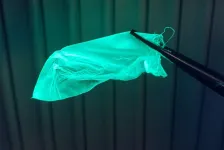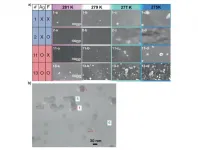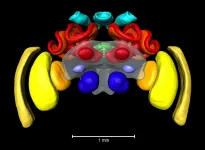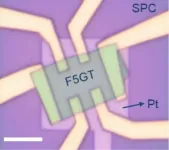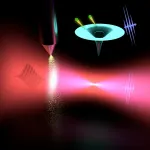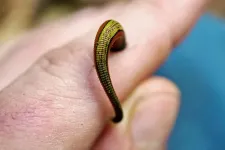INFORMATION:
Article reference: Chunxiong Zheng, Mingqiang Li and Jianxun Ding, Challenges and Opportunities of Nanomedicines in Clinical Translation. BIO Integration, 2021, https://doi.org/10.15212/bioi-2021-0016
BIO Integration is fully open access journal which will allow for the rapid dissemination of multidisciplinary views driving the progress of modern medicine.
As part of its mandate to help bring interesting work and knowledge from around the world to a wider audience, BIOI will actively support authors through open access publishing and through waiving author fees in its first years. Also, publication support for authors whose first language is not English will be offered in areas such as manuscript development, English language editing and artwork assistance.
BIOI is now open for submissions; articles can be submitted online at:
https://mc04.manuscriptcentral.com/bioi
Please visit http://www.bio-integration.org to learn more about the journal.
Editorial Board: https://bio-integration.org/editorial-board/
Please visit http://www.bio-integration.org to learn more about the journal.
Editorial Board: https://bio-integration.org/editorial-board/
BIOI is available on the IngentaConnect platform (https://www.ingentaconnect.com/content/cscript/bioi) and at the BIO Integration website (http://www.bio-integration.org).
Submissions may be made using ScholarOne (https://mc04.manuscriptcentral.com/bioi).
There are no author submission or article processing fees.
Follow BIOI on Twitter @JournalBio; Facebook (https://www.facebook.com/BIO-Integration-Journal-108140854107716/) and LinkedIn (https://www.linkedin.com/company/bio-integration-journal/).
ISSN 2712-0074
eISSN 2712-0082
Keywords: nanomedicines; clinical translation
Challenges and opportunities of nanomedicines in clinical translation
2021-06-28
(Press-News.org) Announcing a new article publication for BIO Integration journal. In this article the authors Chunxiong Zheng, Mingqiang Li and Jianxun Ding from Sun Yat-sen University, Guangzhou, China and Changchun Institute of Applied Chemistry, Changchun, China discuss the challenges and opportunities of nanomedicines in clinical translation.
Researchers are rapidly gaining a much deeper understanding of the challenges and opportunities of nanomedicines allowing for improvements in disease treatment and improved patient survival.
Deep exploration of the connections between preclinical and clinical modeling will facilitate the development of unique animal-based disease models remarkably similar to the human pathological mechanism to elevate the accuracy of predicting therapeutic efficacy in human clinical trials. Integration of active-targeting ligands and smart stimuli-responsive materials as well as the bio?nano interface interactions will endow nanomedicines with advanced functionalities to pioneer new-concept nanoparticle-based drugs.
By overcoming the obstacles of controllable, reproducible, as well as scalable nanoparticle production, cost, and toxicity, the next generation of nanomedicines that are incorporated with unique molecular modules and therapeutic agents, including cell-based therapeutics, siRNA, mRNA, DNA, protein, and so forth, will be accelerated into clinical development.
ELSE PRESS RELEASES FROM THIS DATE:
Underground fiber optic sensors record sounds of COVID lockdown, reopening
2021-06-28
In March 2020, daily life in the United States changed in an instant as the country locked down to deal with the initial wave of the COVID-19 pandemic. New research reveals how residents in one community returned to their routines as the restrictions lifted, according to a team of Penn State scientists.
"We used sound signals captured by underground fiber-optic sensors to understand how COVID measures impacted human activities," said Junzhu Shen, a graduate student in geosciences at Penn State. "These sensors provide very accurate, high-resolution data that can help us understand what's happening in our communities."
The scientists analyzed sound data recorded from March through June 2020 in and around the Penn State University Park campus and State College, ...
Advanced care: Smart wound dressings with built-in healing sensors
2021-06-28
Researchers have developed smart wound dressings with built-in nanosensors that glow to alert patients when a wound is not healing properly.
The multifunctional, antimicrobial dressings feature fluorescent sensors that glow brightly under UV light if infection starts to set in and can be used to monitor healing progress.
The smart dressings, developed by a team of scientists and engineers at RMIT University in Melbourne, Australia, harness the powerful antibacterial and antifungal properties of magnesium hydroxide.
They are cheaper to produce than silver-based dressings but equally as effective in fighting bacteria and fungi, with their antimicrobial power lasting up to a week.
Project leader Dr Vi Khanh Truong said the development of cost-effective antimicrobial ...
Researchers are using photos of toasters and fridges to train algorithms to detect COVID
2021-06-28
Results of this technique, known as transfer learning, achieved a 99.24 per cent success rate when detecting COVID-19 in chest x-rays.
The study tackles one of the biggest challenges in image recognition machine learning: algorithms needing huge quantities of data, in this case images, to be able to recognise certain attributes accurately.
ECU School of Science researcher END ...
A way to surmount supercooling
2021-06-28
Osaka, Japan - Scientists at Osaka University, Panasonic Corporation, and Waseda University used scanning electron microscopy (SEM) and X-ray absorption spectroscopy to determine which additives induce crystallization in supercooled aqueous solutions. This work may lead to the development of new energy storage materials based on latent heat.
If you put a bottle of water into the freezer, you will expect to pull out a solid cylinder of ice after a few hours. However, if the water has very few impurities and left undisturbed, it may not be frozen, and instead remain as a supercooled liquid. Be careful, because this state is very unstable, and the water will crystallize quickly if shaken or impurities are added - as many YouTube videos will attest. ...
A template for fast synthesis of nanographenes
2021-06-28
A group of researchers at Nagoya University, Japan, have developed a new method for quickly and efficiently synthesizing nanographenes, a type of nanocarbon with great potential as a next generation material.
Nanographenes are the part structures of graphene, which is a sheet of carbon atoms around 3 nanometers thick with particular potential for use in semiconductor development, having electron mobility several hundred times better than current generation materials. Graphene was first isolated in 2004, a discovery which received the 2010 Nobel Prize in physics, making it a very new material which is currently the subject of a great deal of research.
With ...
An atlas of the bumblebee brain
2021-06-28
The buff-tailed bumblebee Bombus terrestris is one of the most common bumblebee species in Europe. It is not only active in nature as a pollinator - humans also use it in greenhouses and foil tunnels to get good harvests of tomatoes or strawberries.
The buff-tailed bumblebee is also used in science: "Basic research is increasingly using it as a model organism to analyse learning and memory, the visual system, flight control and navigation abilities," says Dr. Keram Pfeiffer, Professor of neurobiology at the Biocenter of Julius-Maximilians-Universität (JMU) Würzburg in Bavaria, Germany.
Pfeiffer investigates the neuronal ...
Transforming the layered ferromagnet F5GT for future spintronics
2021-06-28
A RMIT-led international collaboration published this week has achieved record-high electron doping in a layered ferromagnet, causing magnetic phase transition with significant promise for future electronics
Control of magnetism (or spin directions) by electric voltage is vital for developing future, low-energy high-speed nano-electronic and spintronic devices, such as spin-orbit torque devices and spin field-effect transistors.
Ultra-high-charge, doping-induced magnetic phase transition in a layered ferromagnet allows promising applications in antiferromagnetic spintronic devices.
The FLEET collaboration of researchers at RMIT, UNSW, the University of Wollongong and FLEET partner ...
Honey, we shrunk the intense XUV laser
2021-06-28
The invention of the laser has opened the era of nonlinear optics, which today plays an important role in many scientific, industrial and medical applications. These applications all benefit from the availability of compact lasers in the visible range of the electromagnetic spectrum. The situation is different at XUV wavelengths, where very large facilities (so called free-electron lasers) have been built to generate intense XUV pulses. One example of these is FLASH in Hamburg that extends over several hundred meters. Smaller intense XUV sources based on HHG have also been developed. However, these sources still have a footprint of tens of meters, and have so far only been demonstrated at a few universities and research institutes worldwide. ...
Sunflower peptide as 'template' for potential analgesic
2021-06-28
A naturally occurring peptide in sunflower seeds was synthetically optimised and has now been identified as a potential drug for treating abdominal pain or inflammation (in the gastrointestinal tract, abdominal area and/or internal organs). That is the finding of an international study led by Christian Gruber from MedUni Vienna's Institute of Pharmacology (Center for Physiology and Pharmacology), which was conducted jointly with the University of Queensland and Flinders University in Australia and has now been published.
The scientific aim of the study is to find analgesics that are only active in the periphery and do not cross the blood-brain barrier, as an alternative to commonly used synthetic opioids. Gruber explains the background: "Morphine was one of the first ...
New tools for pandemic prevention research: DNA sequencing from water and leech
2021-06-28
In a new scientific investigation headed by the German Leibniz Institute for Zoo and Wildlife Research (Leibniz-IZW), water from African and Mongolian waterholes as well as bloodmeals from Southeast Asian leeches were assessed for the ability to retrieve mammalian viruses without the need to find and catch the mammals. The scientists analysed the samples using high throughput sequencing to identify known viruses as well as viruses new to science. Both approaches proved to be suitable tools for pandemic prevention research as they allow finding and monitoring reservoirs of wildlife viruses. For example, a novel coronavirus most likely associated with Southeast Asian deer species was identified. The results are ...

